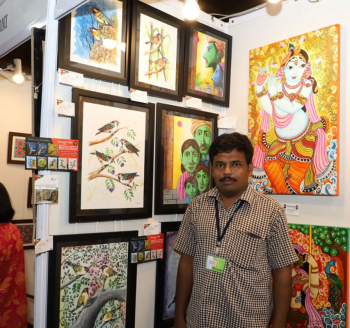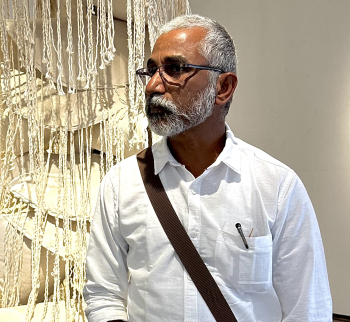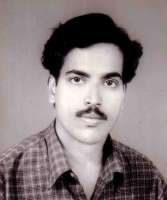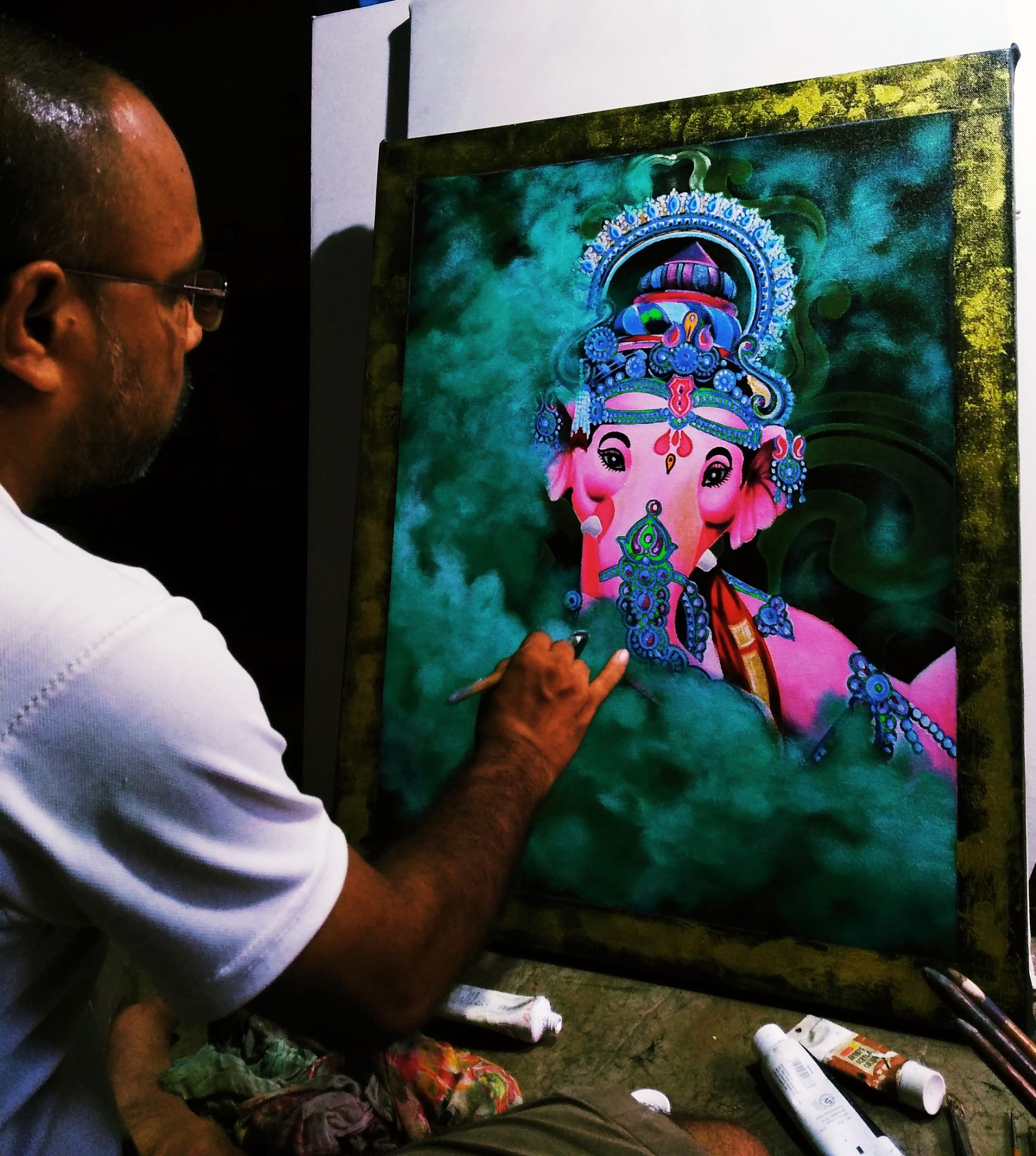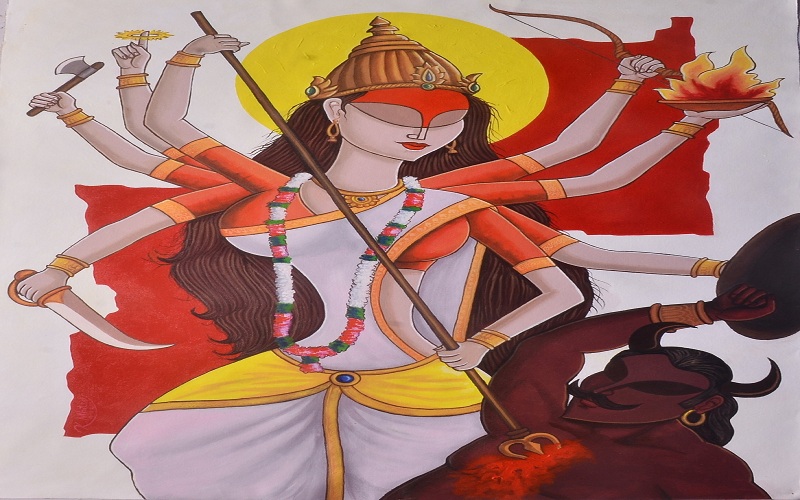
The month of October and November ushers forth a colorful array of religious and cultural celebrations, ranging from Dussehra and Diwali in India to Halloween in the West. Durga Puja, also known as Navratri, is a nine-day Hindu holiday that is widely observed in Bengal and other areas of the country. Celebrate the auspicious days with artwork depicting many Goddess representations.
Ebony Estate Goddess Durga Idol, Salt Lake City, Kolkata, India. This is, in my opinion, the best of all idols. Of course, there will be differences of opinion because some of the idols of a particular region or clubwear genuine gold jewelry. However, this idol does not have any gold embellishments on her, but she does have a lot of excellent work all over her, and her face is divine.
The Goddess of the Three Eyes, Triyambake
Vandeep Kalra's Kali
Mother Durga is also known as the three-eyed Goddess, with each eye representing a different aspect of herself. Desire (moon), action (sun), and knowledge (central eye) are represented by the left eye, right eye, and central eye, respectively (fire). Through her bloodshot eyes, the artist has masterfully created brave Maa Durga. This unique wall décor made of glass mosaic tiles and stained glass material will brighten up your walls.
Aditya Basak's Durga Maa - A Depiction Of Strength Durga
Durga's meaning for women in India has shifted throughout time. Aditya Basak has painted it masterfully in tempera on board, primarily using hues of red, illustrating how women are increasingly viewing her as a symbol of feminine authority, rather than a spiritual mother. It serves as an inspiration to recover the liberties that society has taken away from them through the generations.
The Sapth Matrikas, also known as the Seven Mothers, are a group of seven women.
Rajeshwar Nyalapalli's Sapta Matrika, Secunderabad
The Saptha Matrikas, or seven Mother Goddesses, are shown in this acrylic painting on canvas. They are said to be manifestations of Goddess Shakti, and their appearance and nature vary by place rather than following a consistent pattern. The artist has skillfully used contrasting tones of red and mustard to create a soothing ambiance. The artist's use of crimson creates a dazzling appearance, symbolizing Ma Durga's desire to defend the land from evil.
Dhunuchi Naach
Rajib Gain's Festival Dance
Rajib Gain has captured the dhunuchi naach, one of the most popular and anticipated activities during Durga Puja. This finely painted ritual is done in front of Goddess Durga by carrying an earthen pot filled with burning coconut husk and camphor. His art symbolizes simplicity and upholds the festival's history.
Mahalaya- Invocation Of Maa Durga Paintings
"Mahalaya," an auspicious day, is observed seven days before Durga Puja. Our auspicious event signals Maa Durga's arrival and kicks off the celebrations to welcome her to this world. It's a form of invitation (or should we say a prayer) for the mother goddess to come down to earth, which is why we chant 'Jago, Maa Jago.' Maa Durga paintings are invoked through chanting mantras, singing devotional songs, and reciting scripture texts from "Chandi." The early morning radio program "Mahishasura Mardini" of Akashbani Kolkata on Mahalaya day has been a part of Bengali culture since the early 1930s, and nothing can change its originality as we speak.
The Gods pleaded with Vishnu to slay the demon king Mahishasura because of his escalating wickedness toward the gods. The Trinity of Brahma, Vishnu, and Maheswara (Shiva) unite to form Maa Durga or Mahamaya, the Mother of the Universe, who embodies the primal source of all power, a mighty female figure with ten arms. The Gods then bestow their particular gifts and weapons on this greatest creature. The goddess, armed like a warrior, mounts a lion into combat with Mahishasura. In Maa Durga Paintings, she slays the asura king with her trident after a fierce battle. Her victory brings joy to both heaven and earth.
Manifestation Of Goddess Durga and her Traditional Indian Sculptures!
Goddess Durga's image and concept are strongly rooted in India's heartland, particularly in Bengal. For millennia, artists have been intrigued by the iconography of the ten-armed goddess, from the terracotta temples of Bishnupur to the temples of Hoysala, from Rajput miniatures to the Kangra school, from the Kalighat & the early Bengal paintings. Goddess Durga gets her name from the Sanskrit word 'durg,' which means stronghold or castle and has come to imply something powerful or impenetrable. The goddess is initially mentioned in the Rigveda's 'Devi-Sukta,' but she first appears as a deity in the 'Taittriya Aranyaka.'
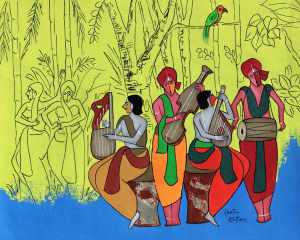
Durga originated over time from the concept of motherly protective force that has been cultivated in every ancient civilization since the dawn of time. This deity has appeared in numerous forms throughout Indian civilization. She is known as 'Mahishasurmardini,' Bhadrakali, Jagaddhatri, and Parvati, all of whom are different manifestations of the same 'Shakti.' The Kalighat Patachitras and the Early Anonymous Bengal Oils are two examples of Durga expressions in pre-modern Indian art. The majority of Durga depictions in early Bengal oils are legendary. The goddess is depicted as she is worshipped in Bengal during a specific season.
Myth and everyday life collide to create a unique visual synthesis. Shiva, dressed in his traditional garb, is shown walking with Ganesh in his arms. He is accompanied by Durga or Parvati. She reaches out her two hands to the youngster who wants to take Ganesh in her arms. The Kalighat School, which flourished near the temple and was patronized by the British, was the first to combine the spiritual with an everyday activity like an evening walk. This was just one example of how Durga's iconography had been portrayed in pre-modern and post-modern Indian art. In Bengal, two unique representations of the Goddess emerge: one is mythological, a source of power, and the other is real.
Wrap up:
While you get the idea of what your Maa Durga Paintings portray, get yourself some amazing Indian sculptures too. Enhance your home and office walls with mesmerizing Maa Durga Paintings and let her blessing be poured over you!











